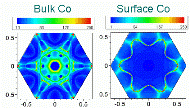Department of Physics and Astronomy: Publications and Other Research
Date of this Version
April 2002
Abstract
Shortly after quantum mechanics evolved Heitler and London [1] applied the then new ideas to the problem of molecule formation and chemical valence. Their treatment of the H2 molecule was qualitatively very successful, and this led to numerous studies by various workers applying the same ideas to other substances. Many of these involved refinements of the original Heitler-London procedure, and within three or four years, a group of ideas and procedures had become reasonably well codified in what was called the valence bond (VB)* method for molecular structure. A few calculations were carried out earlier, but by 1929 Dirac [2] wrote: The general theory of quantum mechanics is now almost complete, the imperfections that still remain being in connection with the exact fitting in of the theory with relativity ideas. These give rise to difficulties only when high-speed particles are involved, and are therefore of no importance in the consideration of atomic and molecular structure and ordinary chemical reactions. The underlying physical laws necessary for the mathematical theory of a large part of physics and the whole of chemistry are thus completely known, and the difficulty is only that the exact application of these laws leads to equations much too complicated to be soluble . . . . Since these words were written there has been no reason to feel that they are incorrect in any way. Perhaps the only difference between attitudes then and now are that, today, with visions of DNA chains dangling before our eyes, we are likely to have an even greater appreciation of the phrase “much too complicated to be soluble” than did early workers.


Comments
Published in Valence Bond Theory, edited by D. L. Cooper. Amsterdam: Elsevier, 2002. Volume 10 of THEORETICAL AND COMPUTATIONAL CHEMISTRY series. Copyright © 2002 Elsevier Science B.V. Used by permission.